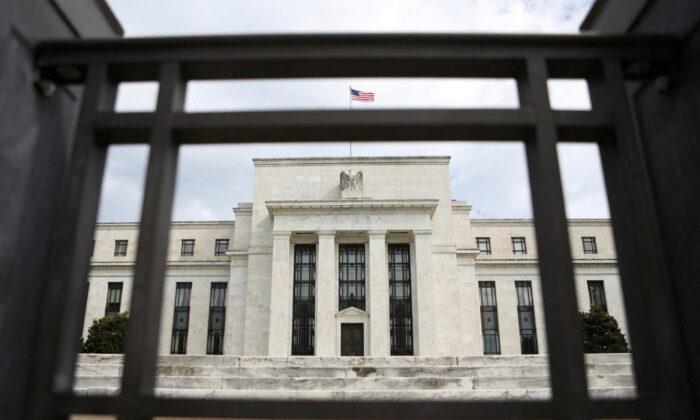Inflation rates hit their fastest pace since 1981 in June, surging 9.1 percent higher from a year earlier and 0.5 percent more than May’s record of 8.6 percent.
With inflation showing no signs of slowing down, many expect the Fed to aggressively raise rates at its upcoming July 26-27 Federal Open Market Committee meeting.
CME’s Fed Watch Tool reported that the chance for a 100 basis point rate hike at the end of July rose to 78.6 percent, up from 7.6 percent on July 12, and 58.4 percent on July 13.The Fed hiked rates by 75 basis points at its last meeting in June, the biggest increase since 1994, following a half-point increase in May.
Bank of Canada Raises Interest Rates
The Bank of Canada announced on July 13, that it was itself, raising interest rates by a 100 basis points, after economists had earlier forecasted a 75-basis-point increase.Meanwhile, consumer prices rose 1.3 percent from May’s pace of 1 percent, making it the fastest gain since the pandemic, adding further pain on American consumers.
Investors see this as a clear sign that the Federal Reserve will increase interest rates by a larger increment this month, putting additional pressure for more aggressive action against skyrocketing inflation.
Key Metrics
Fed Governor Christopher Waller said on July 14, that he still prefers and expects to see the central bank’s benchmark interest rate rise by 75 basis points this month, but is open to a larger move depending on newer data.Waller’s two key metrics were the recent retail sales and housing data, noting that markets are pricing in a high probability of a 100 basis point increase.
“We have important data releases on retail sales and housing coming in before the July meeting. If that data comes in materially stronger than expected, it would make me lean towards a larger hike at the July meeting to the extent it shows demand is not slowing down fast enough to get inflation down,” he said.
Housing starts and housing permits in May, tumbled 14.4 percent and 7 percent, respectively.
Though Waller said that he is open to a larger rate hike, he believes that the market “is kind of getting ahead of itself.”
“I think we need to move swiftly and decisively to get inflation falling in a sustained way, and then consider what further tightening will be needed to achieve our dual mandate,” Waller said.
Monetary Policies Can Only Do So Much
The central bank is aware that its monetary policies will have little effect on the supply chain, consumer spending habits, or the energy and commodity shortages caused by the sanctions over Russia’s invasion of Ukraine.The Fed is solely focused on curtailing demand, by making borrowing more expensive for businesses and individuals, leading to a drop in asset values, which will slow down economic activity and thus inflation.
A rapid jump in policy rates that puts the economy into a recession, is an acceptable risk for Fed policymakers, due to low interest rates, low unemployment, and a high-inflation starting point.
U.S. unemployment is at near historic lows of 3.6 percent and interest rates are still at historically low levels, leaving the Fed with some room to maneuver, as the expected hike would only raise the fed funds rate by 2.5-2.75 percent.
The Atlanta Fed’s GDPNow tracker indicated a 1.2 percent decline in U.S. GDP for the second quarter, meeting the criteria of a recession.
Despite several experts warning that the United States is heading towards or is currently in a recession, Waller still remains optimistic about the economy, despite his concerns about high inflation.
The strong jobs market has him “feeling fairly confident that the U.S. economy did not enter a recession in the first half of 2022 and that the economic expansion will continue,” and that the economy can still achieve a “soft landing” without facing a recession, even if rates are tightened.
“Arthur Burns legacy is tarnished by his decision to lower rates as real GDP slowed during a period of high inflation.”
“This catalyzed years of massive inflation which was not quelled until Volcker took FF to 20%. Burns’ policy error is well understood by Powell and the Fed governors and likely explains their dot plot curves.”
“Volcker maintained FF substantially above CPI for years to moderate inflation,” said Ackman, referring to former Fed chairman Paul Volker, who helped end the recession by the mid-80s.





